7 Reasons to Include Fats in Your Diet
- By Yelena B
- One Comment
Often, those starting to lose weight abruptly give up fats in their diet. The first thing people do is create a calorie deficit thinking that the easiest way will be to eliminate fats. But is this really the case? Let’s explore together whether fats are our enemy, and how to consume fats so that they are still an ally on the way to a healthy weight.
Essential Fats Functions
- Energy. The breakdown of 1g of fat releases 39 kJ (9.3 kcal) of energy, which is much more than the oxidation of carbs. In the form of glycogen, the body can store energy to support basic metabolism for no more than a day, while in the form of triglycerides – for several months.
- Structural. Lipids in complex with proteins are a structural component of all cell membranes. As such, they are involved in the transport of substances across membranes, receptivity, and other membrane processes
- Regulatory. The regulatory function is performed by hormones of steroidal nature, as well as tissue hormones prostaglandins, formed from polyunsaturated higher fatty acids
- Thermoregulatory. Fats, which are part of the subcutaneous tissue, protect the body from hypothermia, because they are poor conductors of heat
- Protective. Lipids in the form of fatty layers protect internal organs from mechanical damage, as well as nerve endings and blood vessels from compression and bruises. Fat gives elasticity to the skin, and saturated fatty acids – bactericidal properties
- Solvent. Fats dissolve many organic compounds, including vitamins A, D, E, K. Thanks to this, they easily penetrate through the walls of blood vessels, cell membranes, are transported in biological fluids
- Cholesterol. Cholesterol is a source of synthesis of bile acids, hormones, including steroid hormones (adrenal hormones, sex hormones).
Fats Types
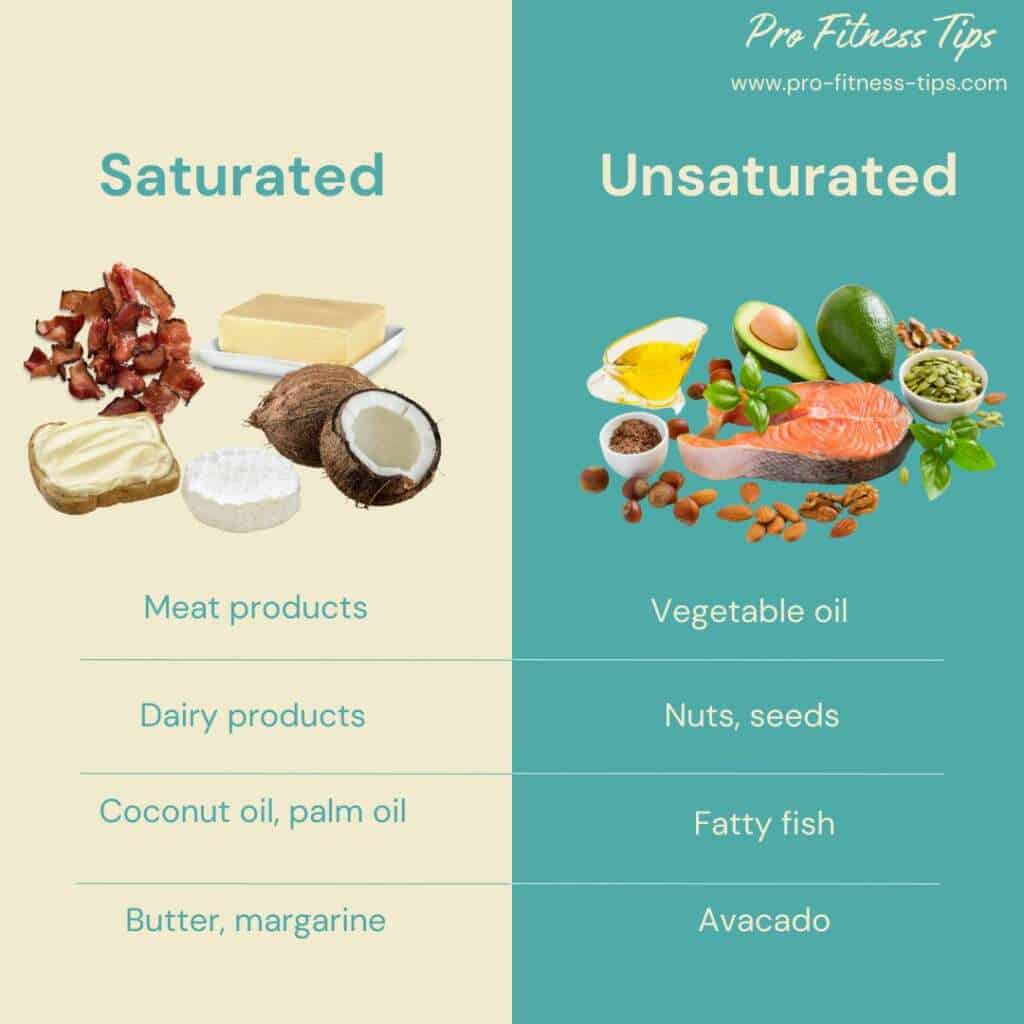
The difference between saturated and unsaturated fats is in their chemical composition:
- Unsaturated fatty acids have double bonds in the fatty acid chain:
o monounsaturated have one double bond in the fatty acid chain
o polyunsaturated acids have multiple double bonds in the fatty acid chain. - Saturated fatty acids do not have double bonds between carbon atoms
Unsaturated Fat
- oils: sunflower oil unsaturated fats, corn, soybean, flax, hemp and cottonseed oils
- pine nuts and walnuts
- eggs
- flaxseeds, grape seeds
- fatty fish: sardine, salmon, trout, salmon, mackerel, fish oil (Omega-3 unsaturated fats and Omega-6) and caviar.
Monounsaturated fatty acids, Omega-9, support arterial elasticity and sustained levels of good HDL cholesterol, and improve and stabilize blood lipid levels. In high concentrations are found in:
- oils: olive oil, peanut oil, canola oil, lynx oil, mustard oil
- avocados
- nuts: almonds, peanuts, cashews, pistachios, hazelnuts, pecans
- seeds: pumpkin and sesame
Saturated Fat
Natural saturated fats are mainly products of animal origin: meat, dairy products. It should be noted that poultry and fish contain less saturated fat than red meat. Tropical oils such as coconut oil, palm oil (which is a very controversial product, I will talk about it separately) and cocoa butter also contain saturated fats.
Foods made with butter, margarine (baked goods, cakes, cookies, etc.) also contain a lot of saturated fat.
Even nuts contain saturated fats in small amounts.
Saturated fats are called bad fats, so their consumption is advised to limit 10% of the daily diet. Such recommendations are given by the WHO. American Heart Association recommends aiming for a diet in which saturated fats make up 5%-6%.
While studies show that eating certain foods high in saturated fat can have negative health effects, it’s important to remember that not all saturated fats are the same.
For example, a diet high in saturated fat in the form of fast food, fried foods, high-sugar baked goods, and processed meats is likely to affect health differently than a diet high in saturated fat in the form of high-fat dairy products, fattening meats, and coconuts.
Saturated Fat Foods
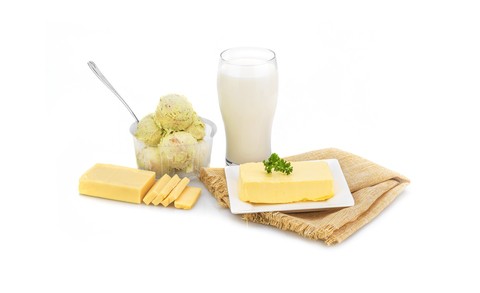
dairy products rich in saturated fats: milk, cheese, butter, cream, ice cream;
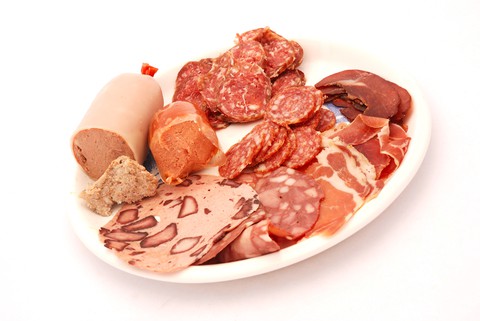
fatty meats and meat products: lard, bacon, sausages, pork;
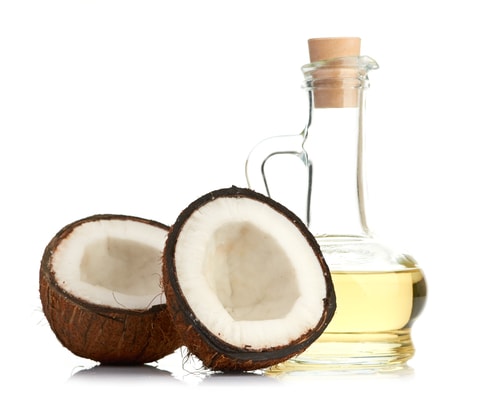
tropical oils: coconut oil, palm oil, cocoa butter;

confectionery: candies, cookies, cakes and pies.
Trans Fats
Trans fats (or trans-isomers of fatty acids) are fatty acids that have a specific configuration. Small amounts of naturally occurring trans fats are found in meat and dairy products.
They are formed naturally as a result of bacterial activity. Moderate consumption of natural products containing trans fats does not have a negative impact on health due to their small amount.
Industrially produced trans fats are solid fats obtained from liquid vegetable oils by hydrogenation (hydrogen addition) and are the most harmful type of fat found in food. In the process of hydrogenation, the structure of the molecules of the substance is changed, and when these chemical elements enter the body, they replace the molecules of the “correct” lipids.
As a result of such “interference”, cells stop performing their functions, hormonal and enzyme systems are harmed, and the risk of developing many diseases increases.
The mass use of trans fats is associated with the invention of margarine in the early 20th century. The hydrogenation technology has become a huge plus for the food industry, due to a number of reasons, but two main ones can be highlighted:
- Trans fats significantly increase the shelf life of foods
- Their cost is significantly lower than butter and lard
Products High in Trans Fats
- Sweet bakery products are the leaders in trans fats content.
- Confectionery products – pastries, cakes, candies – are most often prepared with margarine. Layered pastries may contain up to 10% trans fats.
- Ice cream, dairy drinks
- Potato chips, French fries and other fried foods, especially fast food can contain 18% to 46% trans fats.
- Sausages, wieners, ham, bacon, salted and smoked meats, canned meats
- Frozen semi-finished ready-to-eat culinary products may contain one-third of the allowable daily allowance of trans fats.
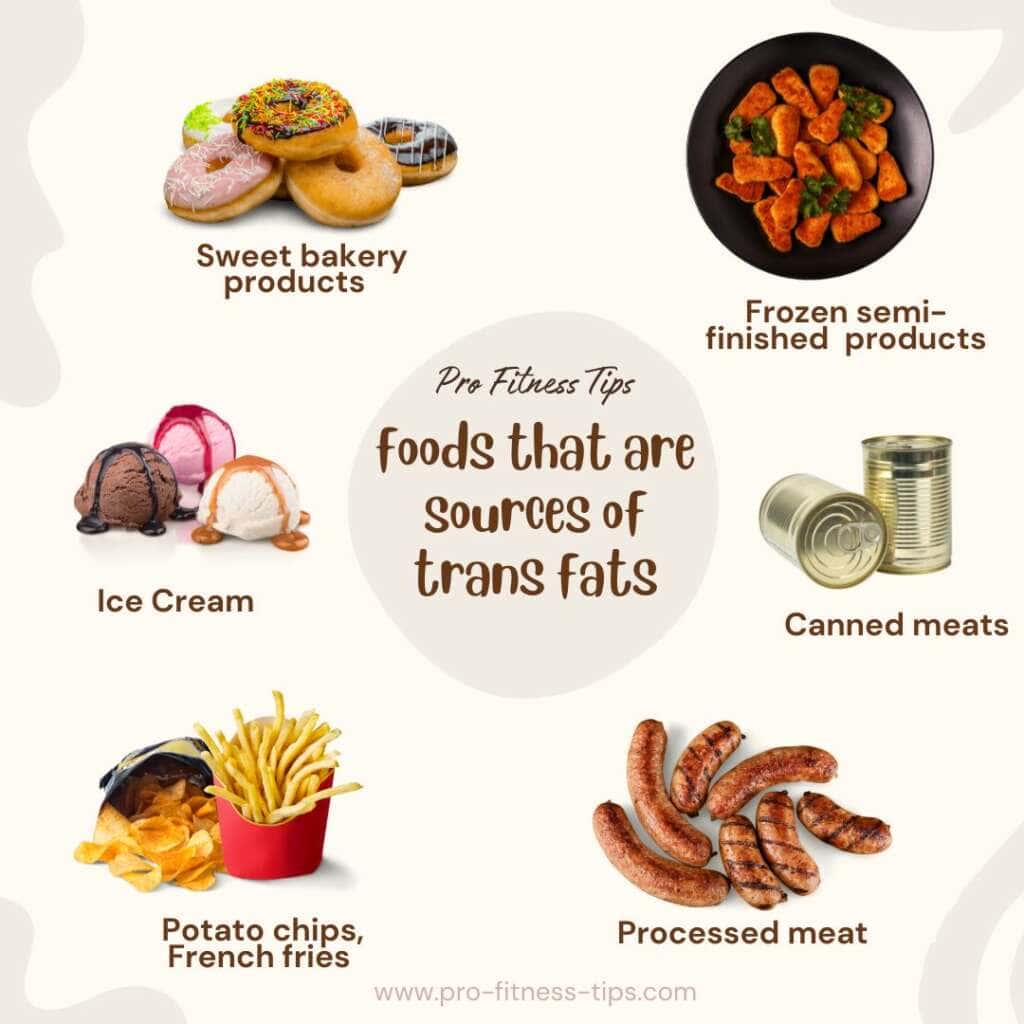
According to WHO recommendations, trans fat intake should not exceed 1% of total calorie intake.
Benefits of Fats
- Building cell membranes
- Synthesis of sex hormones
- Responsible for the absorption of vitamins A, D, E, K.
- Protection against cold
- Serve as a “safety cushion” for organs during various bodily injuries
- Provide energy during prolonged hunger
- Necessary for brain and nervous system function
Fat Deficiency
- Depletion of the nervous system
- Decreased resistance to infections
- Hormonal imbalance
- Early aging
Excess Fats
- Obesity
- Increased blood clotting
- Activation of liver and gallstones formation processes
- Atherosclerosis
- Degenerative processes in the liver and kidneys
- Increase in blood pressure and strain on the heart

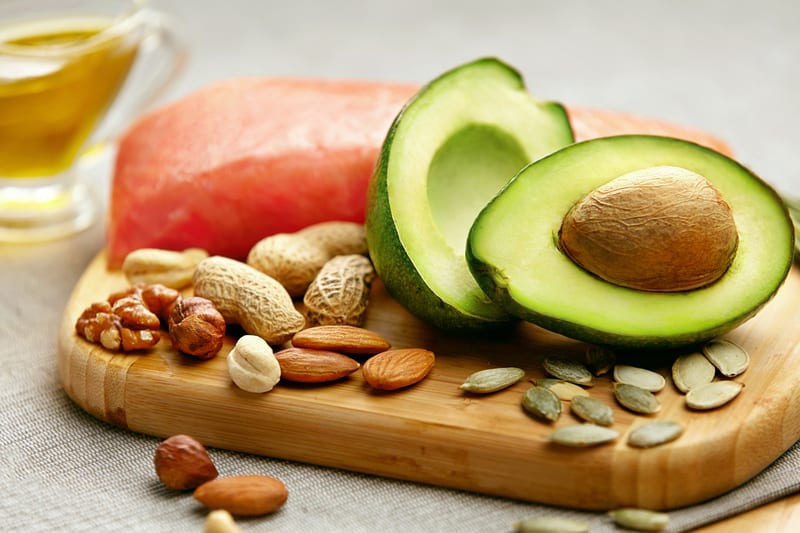


1 Comment
Leave a reply